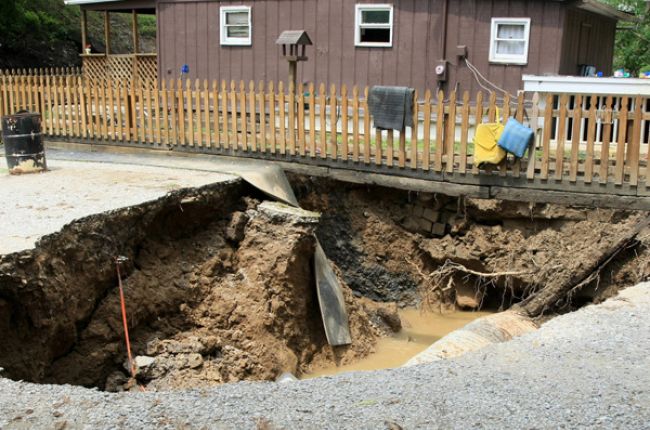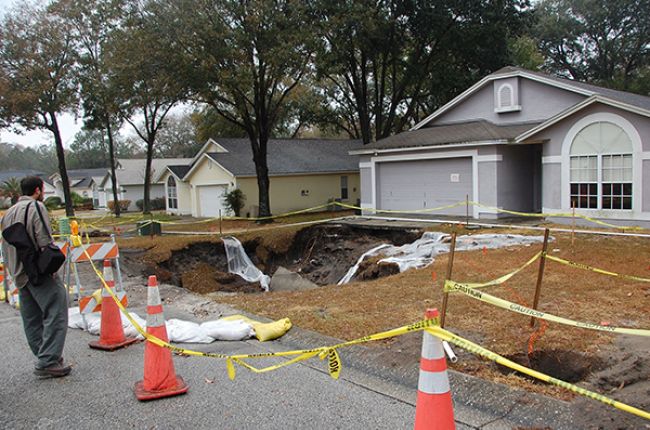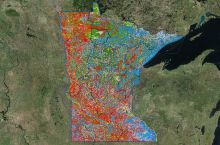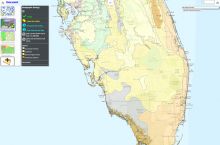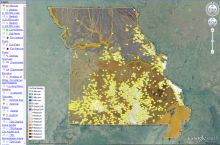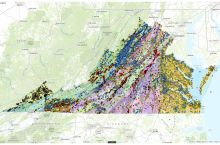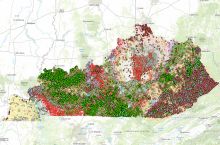Most sinkholes occur in places where water can dissolve the rock below the surface, for example where the bedrock is limestone, salt, or gypsum. They can collapse very quickly, or slump slowly over time. Many sinkholes occur naturally, but human activities can also cause them. Over-pumping of groundwater, mining, and leaking pipes beneath roads and buildings are common causes of artificial sinkholes.
Why do sinkholes matter?
Like landslides, sinkholes can devastate small areas. Natural sinkholes are a potential threat throughout 20% of the United States.[1] Florida, Texas, Alabama, Missouri, Kentucky, Tennessee, and Pennsylvania are most sinkhole-prone because of their bedrock. Human-induced sinkholes can develop anywhere due to careless practices.
How does geoscience help?
Geoscientists study how sinkholes form in order to warn the public. They make maps identifying the types of bedrock where sinkholes are likely to form so that homeowners and public officials can understand their local risks.
References
1U.S. Geological Survey, 2013, The Science of Sinkholes, Web Feature, www2.usgs.gov/blogs/features/usgs_top_story/the-science-of-sinkholes/?from=textlink
Learn More
Introductory Resources
-
Living with Karst - A Fragile Foundation (Booklet), American Geosciences Institute
This booklet illustrates what karst is and why karst areas are important. It also discusses karst-related environmental and engineering concerns, guidelines for living with karst, and highlights sources of additional information.
Resources for Educators
- Education Resources Network, AGI's Center for Geoscience & Society
Search for sinkhole resources in: Organizations, Curricula & Instruction
- NGSS Performance Expectations, Next Generation Science Standards
2-ESS2-1, 5-ESS2-1, MS-ESS2-2, HS-ESS2-1, HS-ESS2-2, MS-ESS2-4, MS-ESS2-2, HS-ESS2-5
- NGSS Disciplinary Core Ideas, Next Generation Science Standards
ESS2.A, ESS2.C

